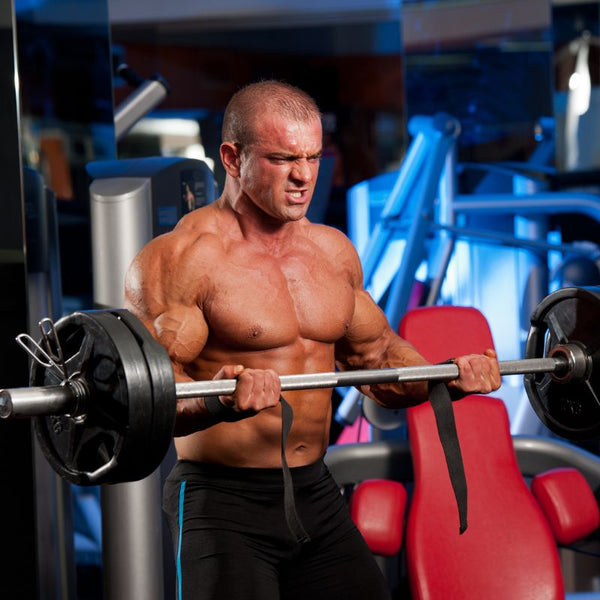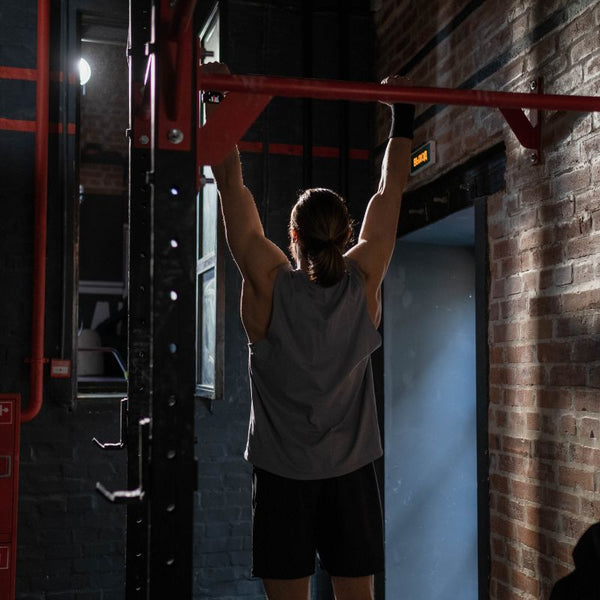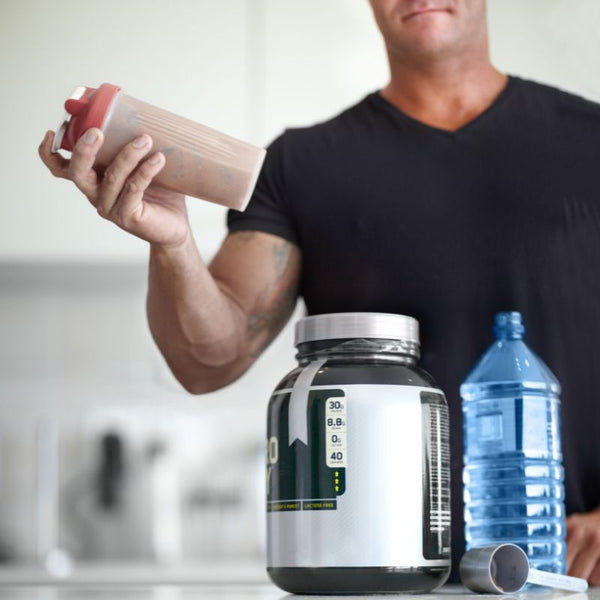Biceps are one of the most commonly trained muscles in the body, and for good reason. They are not only aesthetically pleasing, but they also play an important role in many upper body movements. If you're looking to grow your biceps, keep reading and learn science-backed methods for building bigger, stronger biceps.
How to get bigger biceps - The Truth

Focus on Progressive Overload
Progressive overload is the concept of gradually increasing the stress placed on your muscles over time in order to stimulate growth. When it comes to building bigger biceps, progressive overload is key. This can be achieved through several methods, such as increasing the weight you lift, doing more reps, or reducing the rest time between sets. Add slightly more weight to your curls, or try to perform an extra repitition on each workout. Hitting the same numbers every workout isn't enough of a stimulus necessary to force your biceps to grow.
A study published in the Journal of Strength and Conditioning Research found that subjects who used progressive overload in their training program had significantly greater muscle growth than those who did not. So if you want to see results, make sure you are consistently challenging your muscles and increasing the workload.
Prioritize Compound Movements
Compound movements are exercises that work multiple muscle groups at once. Compound movements like chin-ups, pull-ups, and rows are extremely effective at building the biceps. These exercises not only target the biceps, but also recruit other muscles in the upper body, resulting in greater overall muscle growth.
Research has shown that compound movements are more effective than isolation exercises (exercises that target only one muscle group) for muscle hypertrophy. One study published in the European Journal of Applied Physiology found that subjects who performed compound exercises had greater muscle growth than those who did isolation exercises.
Use Proper Form
Proper form is crucial when it comes to building bigger biceps. Not only does it reduce the risk of injury, but it also ensures that you are targeting the right muscles. When performing biceps exercises, make sure you are keeping your elbows tight to your sides and focusing on contracting the biceps throughout the movement. If you struggle to feel or engage the your biceps correctly, try spider curls, concentration curls, preacher curls, performing curls with your back and arms against the wall or an arm blaster.
A study published in the Journal of Sports Science and Medicine found that proper form resulted in greater muscle activation in the biceps compared to incorrect form. So don't sacrifice form for heavier weights or more reps – focus on quality over quantity.
Incorporate Variety
Variety is important when it comes to building bigger biceps. Our bodies are highly adaptable, and doing the same exercises over and over can lead to a plateau in muscle growth. Incorporating a mix of exercises and rep ranges can help provide a different stimulus and prevent boredom in your training.
A study published in the Journal of Strength and Conditioning Research found that varying the exercise selection in a training program resulted in greater muscle growth than using the same exercises repeatedly.
Don't Forget About Recovery
Recovery is just as important as training when it comes to building bigger biceps. Muscles need time to rest and recover in order to grow. Make sure you are getting enough sleep, eating a balanced diet, and taking rest days between workouts.
A study published in the Journal of Physiology found that muscle protein synthesis (the process of building muscle) was elevated for up to 48 hours after a resistance training workout. So make sure you are giving your muscles enough time to recover and grow.
Highly Effective Bicep Building Specific Workouts
For each exercise, choose a weight that allows you to complete the prescribed reps with good form. Rest 30-60 seconds between sets and focus on squeezing your biceps hard on every rep to create a strong mind-muscle connection.
Routine 1: Beginner Bicep Blast
This routine is designed for beginners who are new to strength training and want to build a foundation of strength and size in their biceps. It incorporates some of the most effective exercises for bicep growth.
Dumbbell Bicep Curls - 3 sets of 8-12 reps
Hammer Curls - 3 sets of 8-12 reps
Cable Curls - 3 sets of 8-12 reps
Chin-ups - 2 sets to failure
Push-ups - 2 sets to failure
Routine 2: Advanced Bicep Blast
This routine is designed for advanced lifters who have been training for a while and want to take their bicep development to the next level. It incorporates heavy weights, advanced exercises, and progressive overload to stimulate maximum growth.
Barbell Bicep Curls - 4 sets of 6-8 reps
Incline Dumbbell Curls - 4 sets of 8-10 reps
Preacher Curls - 4 sets of 8-10 reps
Concentration Curls - 4 sets of 10-12 reps
Pull-ups - 3 sets to failure
Routine 3: Bicep Pump Circuit
This routine is designed to provide a high-intensity bicep workout in a short amount of time. It incorporates a variety of exercises and focuses on creating a strong mind-muscle connection to maximize bicep activation. It can be done as a standalone workout or as a finisher after a heavier lifting session.
Dumbbell Bicep Curls - 4 sets of 12 reps
Hammer Curls - 4 sets of 12 reps
Cable Curls - 4 sets of 12 reps
Reverse Curls - 4 sets of 12 reps
Barbell Curls - 4 sets of 12 reps
Conclusion
Building bigger biceps requires a combination of progressive overload, compound movements, proper form, variety, and recovery. By incorporating these principles into your training program, you can maximize muscle growth and see the results you want.
References for studies
- Schoenfeld BJ, Peterson MD, Ogborn D, Contreras B, Sonmez GT. Effects of Low- vs. High-Load Resistance Training on Muscle Strength and Hypertrophy in Well-Trained Men. Journal of Strength and Conditioning Research. 2015;29(10):2954-2963. doi:10.1519/JSC.0000000000000958
- Krieger JW. Single vs. Multiple Sets of Resistance Exercise for Muscle Hypertrophy: A Meta-Analysis. Journal of Strength and Conditioning Research. 2010;24(4):1150-1159. doi:10.1519/JSC.0b013e3181d4d436
- Gentil P, Soares SRS, Pereira MC, et al. Effect of Adding Single-Joint Exercises to a Multijoint Exercise Resistance-Training Program on Strength and Hypertrophy in Untrained Subjects. Applied Physiology, Nutrition, and Metabolism. 2013;38(3):341-344. doi:10.1139/apnm-2012-0222
- Trebs AA, Brandenburg JP, Pitney WA. An electromyography analysis of 3 muscles surrounding the shoulder joint during the performance of a chest press exercise at several angles. Journal of Strength and Conditioning Research. 2010;24(7):1925-1930. doi:10.1519/JSC.0b013e3181ddf731
- Grgic J, Schoenfeld BJ, Latella C, et al. Resistance training volume enhances muscle hypertrophy but not strength in trained men. Medicine and Science in Sports and Exercise. 2018;50(6):1199-1208. doi:10.1249/MSS.0000000000001566
- Robbins DW, Marshall PWM. Test–retest reliability of a weightlifting performance test. Journal of Strength and Conditioning Research. 2012;26(4):1061-1064. doi:10.1519/JSC.0b013e31822e8e9d
- Häkkinen K, Pakarinen A, Kraemer WJ, et al. Basal concentrations and acute responses of serum hormones and strength development during heavy resistance training in middle-aged and elderly men and women. The Journals of Gerontology Series A: Biological Sciences and Medical Sciences. 2000;55(2):B95-B105. doi:10.1093/gerona/55.2.b95



